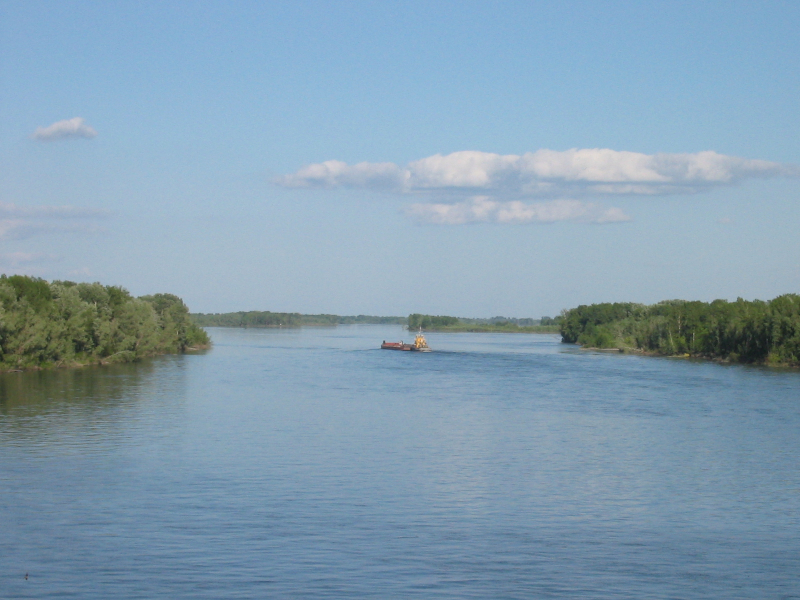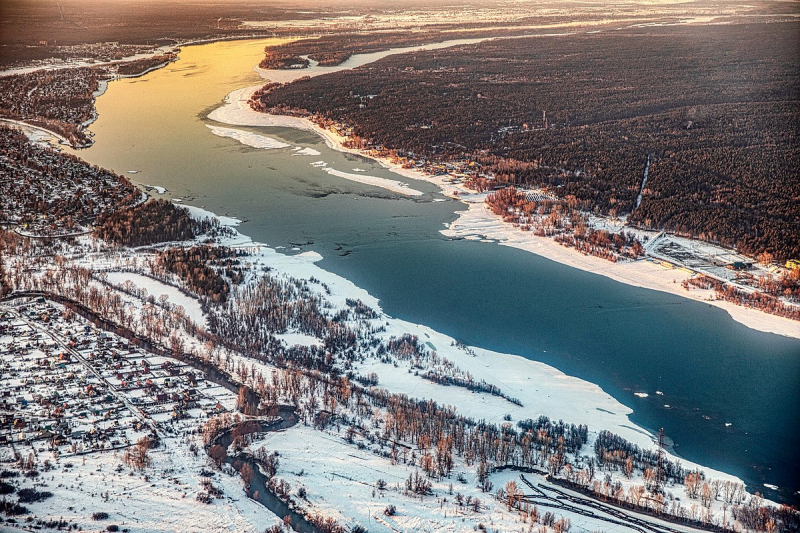Ob River

The Ob is a large Russian river. It is located in western Siberia, and it forms the world's seventh-longest river system, with a total length of 5,410 kilometers, when combined with Irtysh (3,360 mi). It is formed by the meeting of the Biya and Katun rivers, both of which originate in the Altai Mountains. It is the westernmost of the three major rivers that flow into the Arctic Ocean in Siberia (the other two being the Yenisei and the Lena). It flows north-westward, then northward, before repeating these directions over a longer distance. The main city on its banks is Novosibirsk, the largest city in Siberia, and the third-largest city in Russia. It is where the Trans-Siberian Railway crosses the river. The Gulf of the Ob is the world's longest estuary.
Currently, the Ob River serves as a significant navigable canal, facilitating cargo transportation from Russia's interior to the country's major trade hubs and cities. This maritime channel is used to trade both agricultural and industrial items for import and export. The Ob River Basin is home to a huge number of Siberian oil and natural gas reserves, which produce two-thirds of the country's oil and natural gas. Numerous of the country's industrial centers, including as Novosibirsk and Barnaul, are located along the river's banks. Agriculture and animal ranching are major occupations in the river's diverse habitats' steppe zones. The Ob River Basin's fisheries are very well-developed, and Russian fishermen land significant quantities of edible fish captured from the Ob each year. The Ob River has the capacity to generate around 250 billion kilowatts of hydroelectric electricity. There are currently three hydroelectric projects on the Ob-Irtysh, one on the Ob at Novosibirsk and two on the Irtysh at Bukhtarma and skemen, respectively.
In the upper and middle courses of the river, extensive stretches of grassland and taiga plants make up the environment around the Ob River. Birches, pines, firs, and cedars are among the many trees that may be found in these places. Along the Ob River's stream, willow groves, wild rose bushes, and bird cherry trees flourish. More than 50 different species of fish, including sturgeons, carps, perches, nelmas, and peleds, can be found prospering in the river basin's waters. Around the Ob River, about 150 species of birds, including several migratory species, can be seen. Minks, wolves, Siberian moles, otters, beavers, and ermines are only a few of the ecosystem's native mammalian species.
Length: 3700 km









